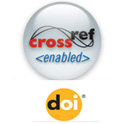



Review Article - (2023) Volume 16, Issue 104
Received: Sep 04, 2023, Manuscript No. jisr-23-115581; Editor assigned: Sep 06, 2023, Pre QC No. jisr-23-115581; Reviewed: Sep 19, 2023, QC No. jisr-23-115581; Revised: Sep 26, 2023, Manuscript No. jisr-23-115581; Published: Sep 30, 2023
Gender equality is recognized as a fundamental human right and a catalyst for sustainable development. To effectively navigate the journey towards gender parity, adopting the balanced scorecard approach is crucial. This article explores the concept of "Scorecarding Gender Equality" as a strategic tool for measuring progress, setting objectives, ensuring alignment, fostering accountability, and facilitating adaptation in the pursuit of sustainable development. The balanced scorecard offers a comprehensive pathway to achieve economic growth, social progress, environmental sustainability, and peace and stability while promoting gender equality. Embracing this approach holds the potential to create a more equitable and sustainable world for all.
gender equality; women empowerment; sustainable development; 2030 Agenda; balanced scorecard
Gender equality is not only a fundamental human right but also a key driver of sustainable development. Achieving gender equality can significantly contribute to economic growth, social progress, and environmental sustainability. However, to make meaningful progress, it's essential to measure and track our efforts systematically. This is where the concept of "Scorecarding Gender Equality" comes into play.
The Balanced Scorecard Approach
The balanced scorecard is a strategic management tool that organizations often use to track and manage their performance across various dimensions. These dimensions typically include financial, customer, internal processes, and learning and growth. Applying this concept to the realm of gender equality and sustainable development offers a structured and comprehensive approach to achieving tangible results.
Measuring Progress: One of the most crucial aspects of the balanced scorecard is measurement. To achieve gender equality, it's essential to track progress consistently. This includes monitoring gender disparities in education, employment, leadership positions, and income levels. By quantifying these disparities, we can identify areas that require attention and allocate resources effectively.
Setting Clear Objectives: The balanced scorecard helps in setting clear and specific objectives related to gender equality. Organizations and governments can define targets for increasing female representation in decision-making roles, reducing the gender pay gap, or ensuring equal access to education and healthcare. These objectives provide a roadmap for action.
Strategic Alignment: The balanced scorecard encourages alignment between different stakeholders. It can be used to ensure that policies, programs, and initiatives aimed at promoting gender equality are in sync with broader sustainable development goals. This alignment ensures that efforts are not fragmented but contribute to a unified vision.
Accountability: Accountability is a cornerstone of any successful gender equality and sustainable development strategy. By assigning responsibilities and tracking progress through the scorecard, governments, organizations, and individuals can be held accountable for their commitments and actions.
Adaptation and Improvement: A balanced scorecard is not a static tool; it allows for continuous improvement. As data is collected and analyzed, adjustments can be made to strategies and interventions to maximize their effectiveness. This adaptive approach ensures that efforts remain relevant and responsive to changing circumstances.
The Pathway to Sustainable Development
Scorecarding gender equality serves as a powerful pathway to sustainable development by addressing several critical dimensions:
Economic Growth: Gender equality in the workforce can boost economic growth by tapping into the full potential of the population. When women have equal access to employment opportunities and are paid fairly, it contributes to increased productivity and prosperity.
Social Progress: Promoting gender equality leads to more inclusive societies where everyone has equal access to education, healthcare, and social services. This, in turn, fosters healthier and more resilient communities.
Environmental Sustainability: Sustainable development encompasses environmental considerations. Gender equality can play a role in sustainable resource management and climate action. Research suggests that women often have a greater focus on sustainability and are more likely to advocate for environmentally responsible practices.
Peace and Stability: Gender equality is closely linked to peace and stability. Societies with greater gender equality tend to experience lower levels of violence and conflict. By promoting gender equality, we contribute to global peace efforts.
Scorecarding gender equality is not just about numbers; it's about creating a more equitable and sustainable world. By using the balanced scorecard approach, we can systematically measure progress, set clear objectives, align strategies, hold stakeholders accountable, and adapt to changing circumstances. This pathway to sustainable development ensures that gender equality remains at the forefront of our efforts, leading us toward a more prosperous, inclusive, and sustainable future for all.

The Journal of International Social Research received 8982 citations as per Google Scholar report